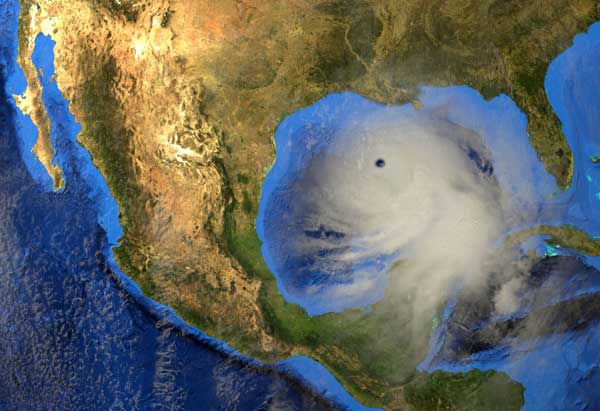
While horse owners in East Texas and along the Louisiana’s Gulf Coast are still reeling from Hurricane Laura’s aftermath, the National Hurricane Center (NHC) of the National Oceanic and Atmospheric Administration (NOAA) is predicting that the 2020 hurricane season will be the most active in recent years. In response, equine-focused emergency groups are working to meet the expected challenges head-on.
So far, Hurricane Laura is being blamed for more than $25 billion in damage and at least 16 deaths. According to the National Weather Service, the storm was one of the strongest hurricanes ever to make landfall in the U.S.
Hardest hit were the Calcasieu and Cameron Parishes near Lake Charles, La., according to Rebecca McConnico, DVM, Ph.D., Dipl. ACVIM, who is a professor in Agricultural Sciences and Forestry at Louisiana Tech University and advisor to many equine-focused hurricane response groups. She is also a member of the Louisiana State Animal Response Team, a member of the Louisiana Veterinary Medical Association’s Equine Committee and on the Advisory Council for The Foundation For The Horse.
“Both are rural, and Lake Charles (in Calcasieu Parish) took a direct hit,” says McConnico. “A lot of people did evacuate their horses, but the big issue now is getting hay and feed and fresh water to people and horses in those areas.”
Equine welfare groups in the state and elsewhere are working to get supples and food resources to horse owners in the hurricane-ravaged region.
“Some private groups are setting up hay drops and (a feed manufacturer) has arranged for feed to be brought into the area,” she says.
In addition to those private efforts, the Louisiana Department of Agriculture and Forestry (LDAF) has established a GoFundMe page to accept monetary donations to benefit Louisiana livestock owners affected by the storm, says LDAF Commissioner Mikes Strain, DVM.
In Texas, approximately 190 horses were evacuated ahead of the storm to sheltering facilities in Northeast and Central Texas located outside of the anticipated path of the storm, according to Olivia Hemby, a Texas Animal Health Commission (TAHC) planner in the Department of Energy Management.
Despite the precautions, Texas was spared the brunt of Hurricane Laura.
The Texas A&M University Veterinary Emergency Team (VET) deployed to Jefferson County (Texas) based on the request of local officials, says Director Wesley Bissett, DVM, Ph.D.,
“It was the perfect thing for them to do to anticipate damage and to be prepared,” adds Bissett through a written statement. “We were very fortunate, and really all of Texas was very fortunate, that the impact here was not as bad as anticipated, [and] our services aren’t needed.”
Even so, VET has been in touch with the veterinary community in Louisiana and continues to monitor the situation there.
Hurricane-affected horse owners in Louisiana are also receiving assistance from the Kentucky-based Foundation For The Horse Disaster Relief Fund. That group has donated $5,000 to VET and the Louisiana Veterinary Medical Association’s Equine Committee to underwrite immediate emergency efforts.
In addition, The Foundation For The Horse will work with agencies and veterinary members in Louisiana to identify the needs of the equine community, and to provide monetary and material support, according to Rick Mitchell, DVM, MRCVS, Dipl. ACVSMR, who is the Foundation For The Horse’s Advisory Council Chair.
“The Foundation and the equine veterinary community know the tragic loss of life and incredible destruction and flooding that can and will be caused by Hurricane Laura,” shared Mitchell in a written statement. “We are compelled to reach out, together with our members, horse owners and industry leaders to proactively support the disaster’s equine victims.”
While horse owners continue to recover from Hurricane Laura, the director of NOAA’s National Hurricane Center is urging horse owners in storm-vulnerable areas to remember that the 2020 hurricane season is far from over.
“The 2020 hurricane season is expected to be very active,” says NHC Director Ken Graham in a video message. “It’s important to have a plan.”
McConnico agrees.
“People have to remain aware that hurricane season is dangerous,” she says. “People can’t forget what we learned from Katrina.”






